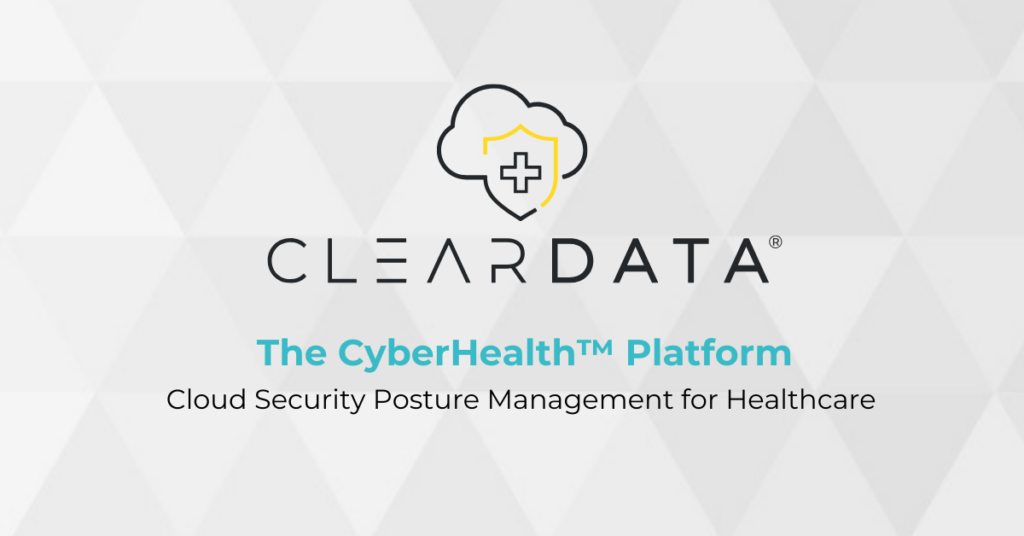
by Matt Ferrari
Co-founder and Former CTO
ClearDATA
Welcome to 2020 – a new decade that will surely provide us with a continuous, sometimes dizzying surge of new technologies and services, especially being driven by the public cloud. When I look at 2019 and recall conversations I’ve had with partners, customers, analysts, and peers, I see five trends that I think will have a big impact on 2020. Let’s take a look at what those are and why they will likely figure heavily into the IT landscape for healthcare in the coming year.
Getting Smart about Artificial Intelligence and Machine Learning
AI and ML had a strong showing in 2019, and that progression and expansion is only going to continue. There are obvious, heavy investments in AI and ML from Amazon, Microsoft, and Google. Recently, at re:Invent AWS launched Transcribe Medical – their own medical transcription service based on natural language processing. That’s just one example. What’s interesting is the design side of this equation. Public cloud partners realize there is a finite workforce trained in AI and ML, so they are working to make their offerings easy to use and easy to learn.
Given the demand for ML talent, Amazon, Microsoft, and Google are all working to develop dashboards and interfaces that make running ML algorithms and getting to insights something the System Administrator or DevOps team can adopt. It’s a win-win as these teams gain marketable skills, and organizations get to benefit from the insights and business intelligence that machine learning and AI bring. All three of those major public cloud providers have also invested in deeper technical training programs, driving the opportunity for both long-time System Administrators that need to learn a new skill set as the market evolves, as well as up and coming Computer Scientists and Engineers who need to learn how to leverage ML and AI tool sets.
We started to see this broader adoption of ML within public cloud in 2018. By the end of 2019, we saw public cloud providers launching more ML services as natively HIPAA-eligible, and even including specific algorithms that can be used out of the box based on previous work with those models. Healthcare leaders looking to gain competitive advantage need to be paying attention to AI and ML and looking at what their plans and scope are for integrating these services into their work.
Containing Costs with Kubernetes
We are going to see even more in the way of containers utilization in the coming year. Gartner made a public prediction that by 2022 more than 75% of global enterprise businesses will be running containerized applications in production. We were at a reported 30% going into 2019, just one year ago, so that is a massive increase. Why the mass move to containers? Tremendous advantage to containerized apps is being realized including cost containment with the ability to spin up or down and letting you burst or destroy on demand, so you only use and pay for what you need, when you need it.
Then, there are the security improvements containers offer – removing the need for continuous operating system-based patch management and ongoing maintenance of the operating system in general. Each time you deploy, you can design your Continuous Deployment model to tear down the infrastructure and redeploy from scratch, greatly decreasing your opportunity for threats to go unnoticed for long within your environment. And, as mentioned above with AI and ML, one only has to look at the investment the clouds are making in Kubernetes services to know we’ll see more, not less of them on the road ahead, be it AWS Elastic Container Service (ECS) or AWS Managed Kubernetes Service (EKS), Microsoft’s Azure Kubernetes Service (AKS) or Google Kubernetes Engine (GKE).
Continuous Privacy, Security, and Compliance – Beyond Deployment to Always On
There’s been an interesting tension for enterprise healthcare as they look to the cloud for all of its benefits, but also realize they need continuous privacy, security, and compliance – not just at the time of deployment or during audits. After all, 2019 was a hideous year for healthcare data breaches with enormous numbers of patient records compromised. Healthcare organizations struggled to keep up with the pace of releases of new features the public cloud provided in 2019, yet they want the innovations and cost savings possible on cloud. So, we’ll be seeing more public clouds launch privacy, security, and compliance tooling into the ecosystem.
We’ll also see more managed service providers move from ‘eyes on glass’ or ‘hands on keyboards’ for security and compliance to focus more deeply on developing their own tools or bundling third party services. The end goal is to drive improved, monitored, automated privacy, security, and compliance for the lifecycle of the application. Enterprises are asking for and investing in newer deployment methodology. We’ve seen work and conversations around continuous integration/continuous deployment (CI/CD) for a while. However, it’s moving to the forefront as organizations think about how to remain secure and compliant for the lifecycle of their apps as they innovate on the public cloud, knowing they cannot rely upon data center technicians, system administrators, or engineers to maintain privacy, security, and compliance at the speed that the public cloud is innovating services.
The Road to Serverless is not a Dead-End Street
Simply put, the road to serverless computing will continue and widen. There’s been mention of cost savings in a few of these trends. Very clearly, the ability to use serverless computing – Lambda as just one example – has allowed healthcare enterprise organizations to pay for their consumption only at the time the data set or piece of code runs, thereby avoiding having to pay for ongoing licensing, manual labor around operating system management, patch management, or system administration management. By focusing on creating high quality code that is run real time, this approach allows organizations to only pay for that time used, then do their vulnerability scanning at the code level.
The growth in serverless is certainly attributable to cost savings, but there’s also the trend of more people getting trained in public cloud who understand serverless and its benefits. System administrators who have spent decades working on their data centers are being pressured professionally to evolve their careers and are turning to cloud certifications. They are being asked to add value to the business, and being trained and certified in public cloud services such as serverless computing can do just that. Maybe it’s being able to write or modify a simply query or connection rather than manage an operating system or managing identity access management on a server. What we’re seeing as this workforce evolves, as does the public cloud, is a lot of tech professionals realizing serverless tooling will provide them with the opportunity to grow their careers, get out of the infrastructure-as-a-cost model, deliver ways to contain costs within their departments, and in doing so, provide value back to their organizations vs. being viewed as a cost center.
I often speak with healthcare IT executives who have concerns about losing their workforce; instead, technologies like serverless provides an opportunity to grow and evolve that workforce, so you can then leverage them to drive innovation into your healthcare system. We’re going to see serverless really evolve and grow, and we’ll see companies like ClearDATA focus more deeply on what values they can add to serverless in the way of continuous security and compliance.
The Rapid Growth of Hybrid is not Hyperbole
This trend has the potential to have the greatest impact on enterprise healthcare organizations. We are not talking about multi-cloud, which is also growing as organizations choose different cloud platforms for different workloads. With this hybrid trend, we are seeing public cloud providers winning more hybrid workloads, with some of the workload on premise and some in the cloud.
The public cloud providers have evolved their own hybrid offerings so they can place their hardware inside the healthcare organization’s facility, as with Google Anthos that can run Google hardware or software inside of a healthcare organization’s data center. AWS Outpost is another example where a physical rack of AWS approved compute ships to the healthcare organization so they can run services like EC2 (Elastic Compute Cloud) or S3 (Simple Cloud Storage Service) right inside their own data center. This allows them to use CapEx on their books while getting used to AWS, GCP, or other public cloud services and eventually adopt these native cloud services off-premise and on cloud. As an AWS example, an organization would be running S3 inside of their own data center, and then replicating that encrypted storage into one of AWS’s availability zones like US East One. Microsoft offers similar opportunities with Microsoft Arc. All three major public cloud providers have developed hybrid models to help those still clinging a bit to their servers get used to a better way of doing business, so they can make their way to public cloud adoption with smoother change management.
It is going to be exciting to see what 2020 brings. Personally, I am enjoying the combination of public cloud technology focusing deeper on Use Case outcomes, along with new services that are focused on making technology easier to consume. In 2019 we had some great breakthrough moments such as the advancements Google is making in breast cancer detection with machine learning and AI, or the work Amazon is doing with medical transcription with Amazon Comprehend Medical and Amazon Transcribe Medical, and Microsoft’s work with Azure Machine Learning to enable developers and data professionals – who are not data scientists – to build advanced machine learning models. ClearDATA has strong partnerships with these cloud providers and continues to enjoy learning and innovating alongside them to help healthcare organizations large and small make the most of the public cloud while protecting privacy, security, and compliance.
Interested in this topic? Check out the Top 10 Things Every CIO Should Know about the Public Cloud.


